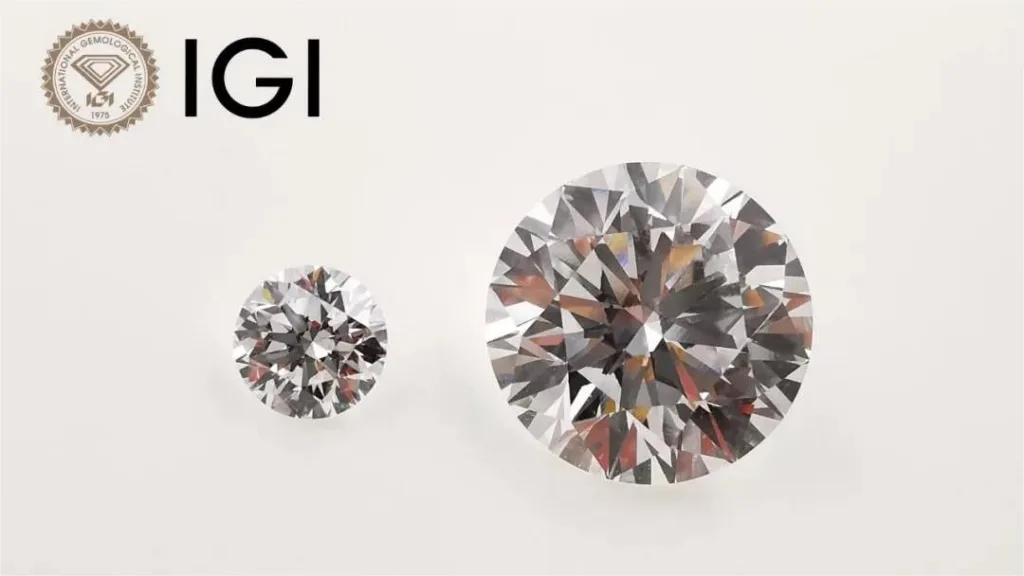Identifying lab-grown diamonds from natural diamonds can be a complex task, but with some basic knowledge and the right tools, even an amateur can make a reasonably accurate distinction. Diamonds, whether they’re grown in a laboratory or formed naturally, share many similar physical and chemical properties, but there are key differences that can help you determine their origin. Here’s a guide to identifying lab-grown diamonds:
1. Certification:
One of the most reliable ways to identify a diamond’s origin is by checking its certification. Natural diamonds are typically accompanied by certificates from reputable gemological laboratories like the Gemological Institute of America (GIA) or the International Gemological Institute (IGI). Lab-grown diamonds also come with certificates, and these documents often specify the diamond’s origin as “laboratory-grown” or “synthetic.”
2. Price:
Price can be an initial indicator. Lab-grown diamonds are usually more affordable than their natural counterparts, especially for larger stones. If a deal seems too good to be true, it’s worth investigating further.
3. Inspection Tools:
Invest in some basic gemological tools to aid in your identification efforts:
- Loupe: A jeweler’s loupe, typically 10x magnification, allows you to closely examine a diamond’s inclusions, which can differ between natural and lab-grown stones.
- Microscope: A microscope with higher magnification can provide even more detailed views of a diamond’s internal characteristics.
4. Inclusions and Blemishes:
Natural diamonds often have inclusions (internal flaws) and blemishes (external flaws) that are unique and can be used for identification. Lab-grown diamonds may also have inclusions, but they often exhibit different types and patterns. Natural diamonds might contain minerals and tiny crystals not commonly found in lab-grown diamonds.
5. Growth Patterns:
Lab-grown diamonds often display growth patterns that can be a telltale sign of their origin. Natural diamonds grow under immense pressure and heat over extended periods, resulting in unique growth patterns. In contrast, lab-grown diamonds may show more regular, repetitive patterns due to their controlled environment.
6. Color:
Both natural and lab-grown diamonds come in various colors, but some colors are more common in one type than the other. For example, lab-grown diamonds are often easier to find in fancy colors, such as intense yellows and blues. While color alone is not a definitive indicator, it can be a clue.
7. UV Fluorescence:
Expose the diamond to ultraviolet (UV) light. Some lab-grown diamonds exhibit strong or distinct fluorescence, whereas most natural diamonds show weaker or no fluorescence. This test is not foolproof, as some natural diamonds also fluoresce, but it can provide additional information.
8. Spectroscopy:
Use a spectroscope to analyze the diamond’s absorption spectrum. Natural diamonds have characteristic absorption lines due to trace elements, like nitrogen, whereas lab-grown diamonds may lack these lines or display different ones.
9. Thermal Conductivity:
A thermal conductivity probe can help distinguish between natural and lab-grown diamonds. Natural diamonds have excellent thermal conductivity, so they disperse heat quickly. Lab-grown diamonds, on the other hand, have lower thermal conductivity and may take longer to disperse heat.
10. Expert Consultation:
If you’re still unsure, consult with a professional gemologist or visit a reputable jeweler. They have access to advanced testing equipment and can provide a more definitive analysis.
In summary, identifying lab-grown diamonds from natural diamonds requires a combination of observation, tools, and knowledge. While no single test is foolproof, a careful examination of a diamond’s characteristics, combined with certification and consultation with experts, can help you make an informed judgment. Keep in mind that the technology for creating lab-grown diamonds is continually advancing, so staying informed about the latest developments in diamond identification is essential for accurate assessments.




